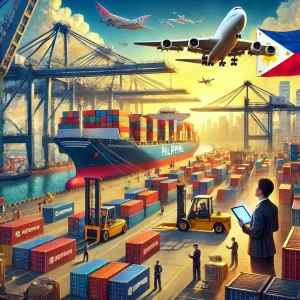Garment's factory to put up by MNC's in PH?. About Nine multinational companies have expressed an interest in establishing textile or garment factories in the Philippines as part of their expansion plans to meet growing demand both here and abroad.
Robert Young, trustee of the Confederation of Philippine Exporters Inc. for the textile, yarn and fabric sector and president of the Philippine Foreign Buyers Association, said in a report that these planned investments are expected to create about 9,000 jobs initially, increasing garments and Textiles. Exports for 500 million dollars a year. Young didn’t make the value of the investments. He said that an ideal fabric factory would have a minimum investment of $1 million, while a garment factory would cost $300,000 to $500,000.
Young said that four multinationals from Cambodia, three from India and two from Vietnam announced their intention to enter the Philippine textile and garment industry during their business-to-business meeting at the 54th ASEAN Meeting invest. Economy Ministers and related meetings held in Cambodia from September 11th to 18th.
“Demand on textile is high for the 110 million Filipino population with no local manufacturing source, annual domestic clothing spending amounts to approximately $2 billion, not to mention the potential in the export business,” he added.
Subscribe to the Ex-works24/7 newsletter
Young said that Philippine textile and apparel industry exports are estimated at $1.5 billion, growing at a rate of 10 percent per year.
These potential investments materialize, he said, key export markets they can cater to include the United States and European Union as well as the Asean economies. Exports to the EU benefit from the Generalized System of Preferences Plus (GSP+) as well as the US GSP, which will be reinstated soon, he added.
“(So) it’s viable (investment) in the Philippines, the reason being (also) is the overcrowding factories in countries like Cambodia, Vietnam and India,” he said. “The expansion plans by multinational investors normally are spread over the region and not putting ‘all the eggs in one basket’.”
“Normally, these investors will have an ocular trip for assessment, then project study will follow. So, it’s in the near term like before the year-end,” Young added.
FOBAP earlier said that the domestic textile and apparel industry has already received large orders from countries that cannot be served by Vietnam, China, India and Bangladesh due to the minimum order quantity. Young said that according to countries’ media reports, the industry will be able to fulfill its orders despite ongoing supply chain problems such as port congestion.
Young admitted that the Russia-Ukraine crisis would pose a challenge to meeting the industry’s export target due to trade sanctions against Russia. Shipments of clothing and textiles to the country totaled US$1,052 million last year, of which clothing accounted for US$758 million.
Approximately 80% of the country’s textile and apparel exports go to the United States, while the rest goes to the European Union, Australia, Canada and ASEAN countries.



